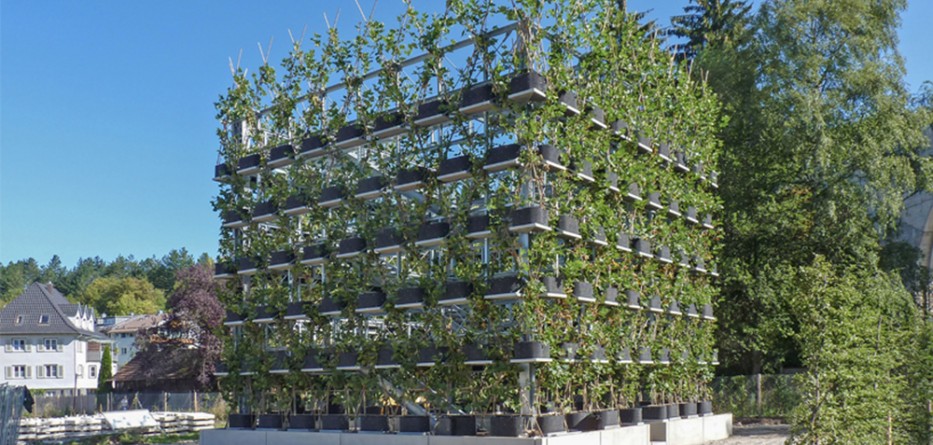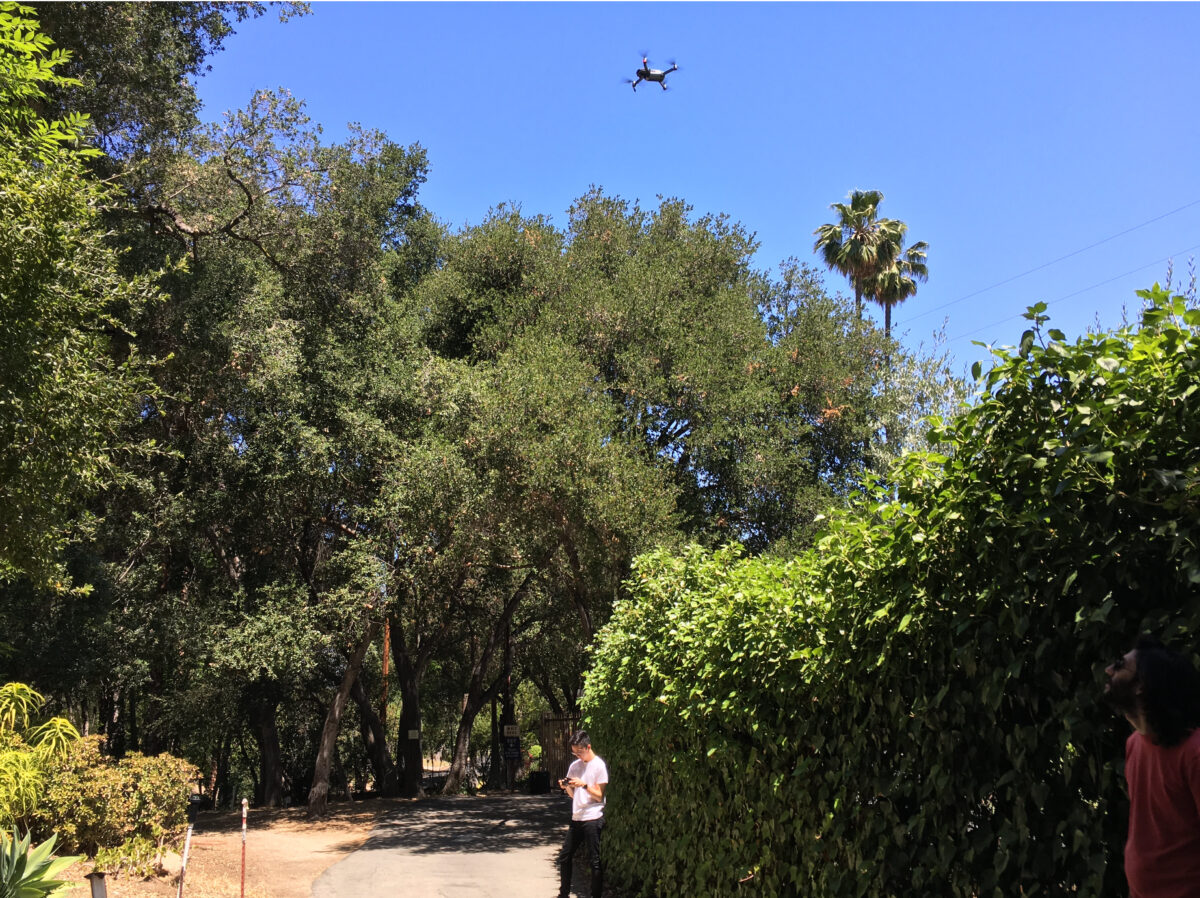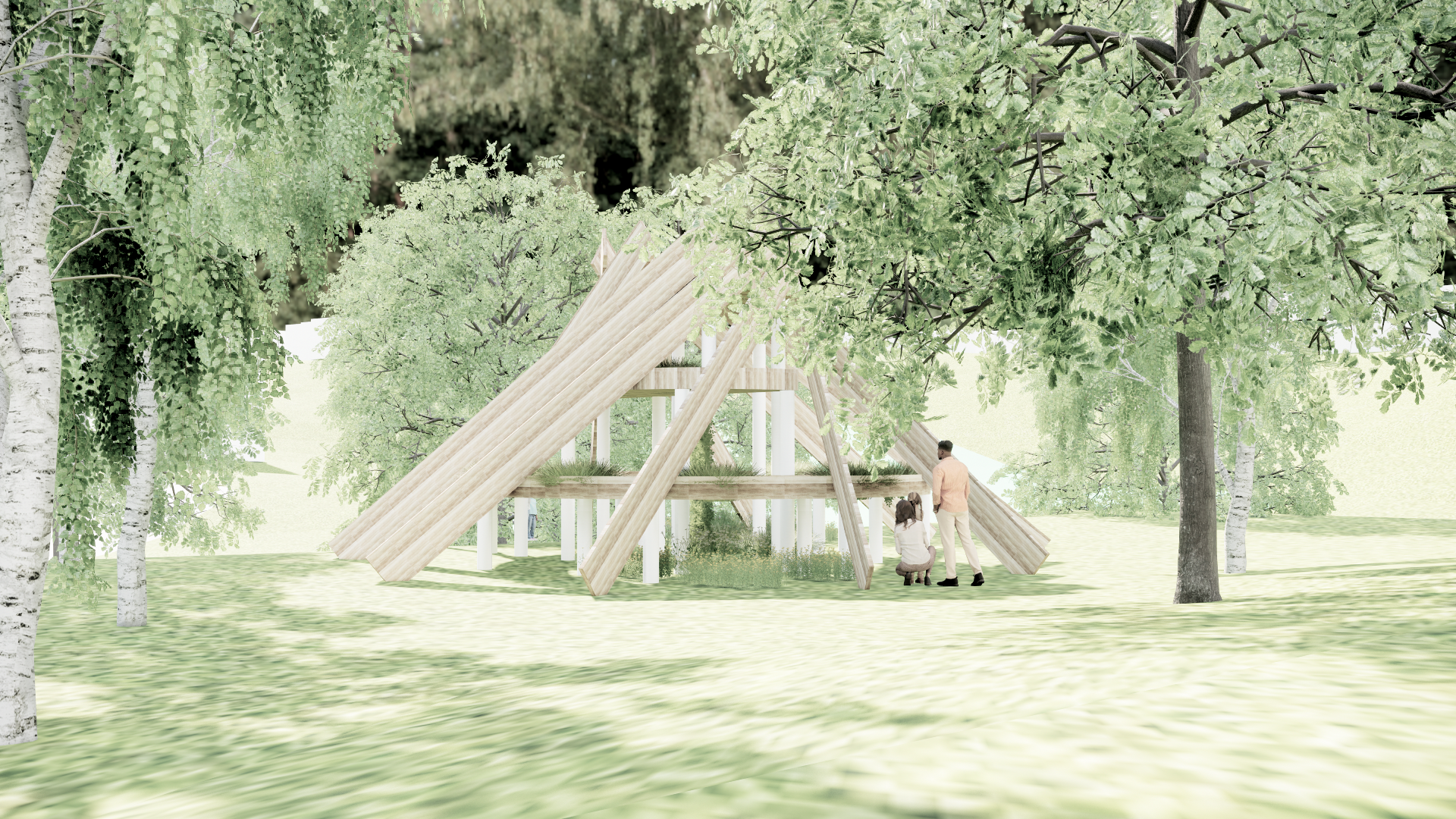Pando Days coming to life: UCLA’s Biophilia Treehouse
We met with Erin Cooney, Associate Director of UCLA’s Counterforce Lab, for an update on UCLA’s Pando Days 2019/20 project, “Biophilia Treehouse,” which unites architecture and native plants for bird and human habitation. The project is now being installed on a quiet hilltop of the Encino campus of the Sisters of Social Service, with funding from the Mellon Foundation/Bringing Theory to Practice.
PANDO: First off, congratulations on Biophilia Treehouse securing both land and funding for a prototype installation. This is a coup! Why all the interest? What’s it galvanizing around?
ERIN: Thank you!
I think people are embracing the Biophilia Treehouse because of how it represents a way of thinking about the whole of our world.
It’s a public arts project; it’s also a living organism. It responds to the biodiversity needs of LA’s wildlife and also to the needs of its human inhabitants.
And it’s a symbol of the interconnectedness of things, human and non-human. It’s a reminder that we’re not somehow separate from nature but are embedded within the ecosystems that are all around us.
I’ve got to ask: Why not just plant trees? The Biophilia Treehouse design looks fantastic…but it seems a bit complex. Why go through all this effort when maybe planting a few trees might work?
We’re wanting to do something very different. The Biophilia Treehouse is not just a collection of trees, and not just a built structure. It represents a different way of thinking about architecture and design and how it interacts with the natural world.
It’s new, but also ancient.
That’s right. The ideas are rooted in the Khasi people of India, who for generations have built natural bridges, with — not out of — trees.

“With, not out of.” That’s not something you typically hear from an architect.
Khasi constructions bend living, growing trees to architectural purposes — in this case, bridges spanning rivers and ravines. Engineering for them winds up being a collaboration with nature, not a fight-to-the-death against it.
Theirs are generational works. The people who start building them will neither finish nor get to use them.
The Biophilia Treehouse follows similar principles and shatters our current, anthropocentric dualism of “nature” on the one hand and “man-made” on the other.
You’re going against much of the history of civilization.
We must. But the task is enormous. And it’s all-hands-on-deck in terms of reconceptualization.
So we’ve teamed up with a German pioneer in the field, Fernand Ludwig, and his living architectural structures called Baubotanik.
Inspired by his work, the structure we’ve collaboratively designed for Biophilia Treehouse is composed of 30% human materials and 70% plants. As such, it represents neither human nor natural activity completely. It is something new. It is both.

You mentioned the factor of time earlier.
The Biophilia Treehouse challenges our basic conceptions of the built-environment by acting not as a final structure — where time is the enemy — but, rather, as a collaboration of nature and people over time, so that the “final” result, if we can call it that, is one that grows through the ages.
Over time, the line between the built structure and nature will blur and mix into something not easily definable.
Those with short attention spans need not apply to work on this project, I take it.
The Treehouse values patience, growth, interconnection, listening and evolution — as opposed to immediate results brought about by isolating human and natural “components” that give us quick results but at the cost of fracturing a felt sense of connectivity.
The structure as we imagine it to be will be constantly becoming, emerging over decades. And it will surprise us, I’m sure.
Where do birds come into play in all of this?
A healthy ecology results in healthy communities. In other words, healthy plants and trees create healthy human structures, which in turn create healthy environments for birds, and so on. It really is all connected.
The Treehouse is a totem of reciprocity.
To understand reciprocity is essential. If you want to live and flourish, you need to make sure your ecosystem lives and flourishes.
Do humans play a bit part?
Not at all. The design equally values the uniqueness of individual, human communities — but as part of a shared ecosystem. We are attempting to accomplish this by linking up to actual communities and starting a dialogue between them with the Biophilia Treehouse as the galvanizing center.
In this case, the community is in Encino?
Yes, the structure is being planted and installed on the property of the Sisters of Social Service in Encino — not far from the UCLA campus at the Sisters’ beautiful retreat location called the Holy Spirit Retreat Center.
We’re designing the Treehouse structure so that the sisters’ stories themselves are embedded.
That sounds extraordinary, but how do you plan to do that?
We’re creating a unique symbology — a set of pictographs that will literally be etched into the Treehouse structural pieces.
The pictographs will speak to the uniqueness of the location in Encino. It will speak to the Sisters’ decades of service to social justice and environmental work. And in line with their spirituality, the tree will serve as an opportunity for introspection, refuge, and place to establish a felt sense of connectedness.
Such a powerful symbol of connectedness obviously can’t stay isolated on a quiet hilltop in Encino.
Not at all. In fact, this is only the first of what we hope will be many such Biophilia Treehouse locations across the Southland — with birds as the points of living connection between them.
So, what’s happening on the ground now?
We’ve surveyed the site, using drones over the difficult terrain.
By the end of UCLA’s fall quarter, the designs for prototype implementation will be completed. By the end of the winter quarter, planting and construction will be underway.

I think you’re going to be busy.
It’s a passion. This is more than an ecological project; it is also an art project. All of us on the team believe in the power of art to touch hearts and change minds on a level that nothing else can do.
The reason is that art embodies stories. It requires stories to be what it is. And the whole point of Biophilia Treehouse storytelling is to awaken us to the idea that we are a part of the ecosystems in which we live.
Are you interested in learning more about the Biophilia Treehouse and getting involved? Donors and volunteers are needed to bring the structures to other locations. Reach out to Erin at erincooney@g.ucla.edu.
